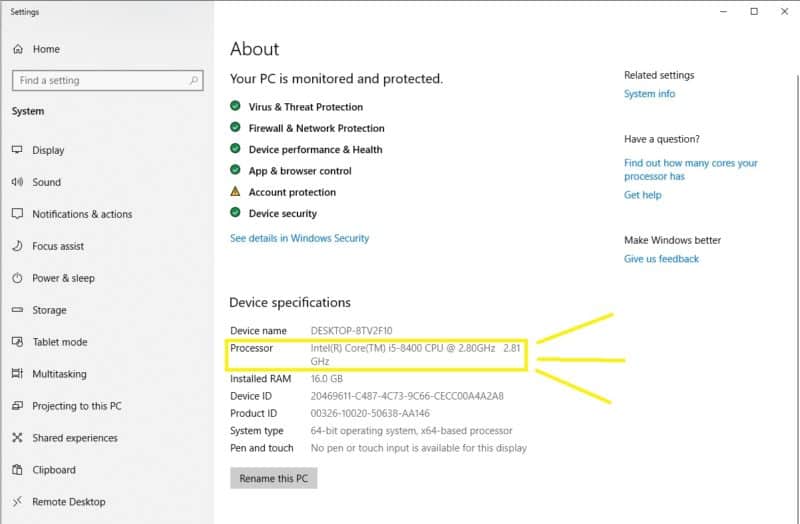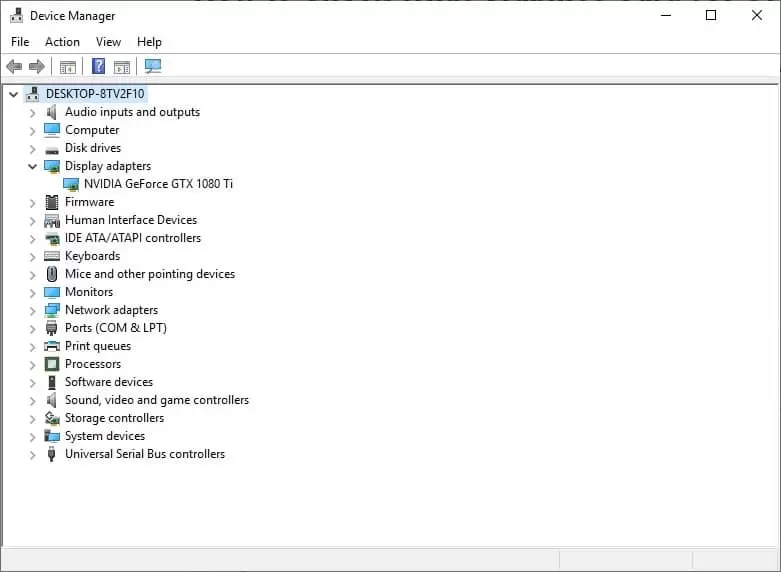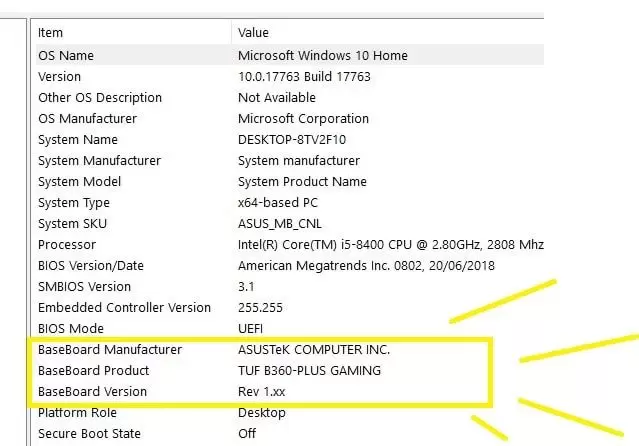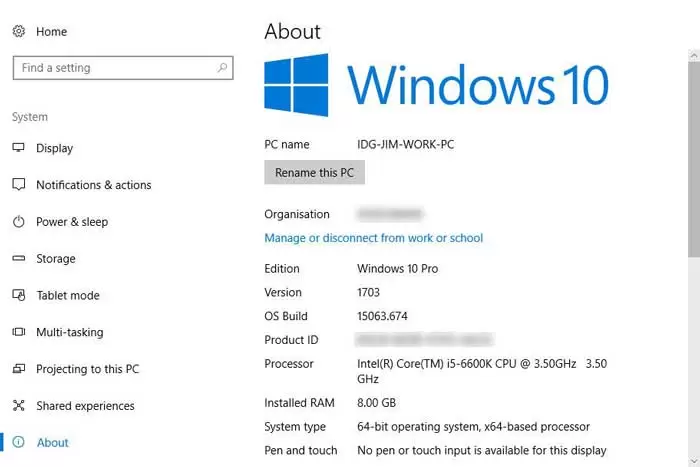How do I check my computer hardware specifications?
You may ask yourself why we need to know the features of our computer. It is a good question; we will mention several reasons below.
You may be looking to upgrade your computer. In this case, you need to know what its current features are to be able to do this. You may also want to sell your laptop; in this situation, you should know its features. There are many reasons, and whatever your reason, checking your computer’s specs is a relatively simple task. We will show you how to do this in this article.
The following will teach you to check everything from CPU speed to available memory.
Checking the CPU model and its speed

The first thing most people want to know about their computer when looking at its specs is its processor (CPU). Fortunately, this is one of the most accessible pieces of information. If you use Windows 10, you are only two mouse clicks away from this information.
To check your computer’s CPU, do the following:
- Click on the Windows tab in the lower-left corner of the right desktop
- In the menu that appears, select System and click
- In the Device Specifications > Processor section, you will see a list of your computer’s CPU
As we said, this is one of the easiest things you can check on any computer.
GPU review (graphics)
After checking the processor your computer is using, you will want to know what GPU or graphics processing unit your laptop has. The good news is that studying the GPU is as easy as checking the CPU, except you have to do one more click.

To check your computer’s graphics processing unit, follow these steps:
- Right-click on the Windows icon in the lower-left corner of the desktop
- In the menu that appears, click on the Device Manager tab
- In Device Manager, click the arrow next to Display adapters
- In the drop-down section, you will see the GPU that your computer is using
This step was also straightforward. However, it’s worth noting that some people may see two options in the Display Adapter drop-down tab, and that’s nothing to worry about. If so, your computer has both an integrated graphics card and a discrete graphics card—and that’s not bad.
However, you are looking for a dedicated graphics card that will be more powerful, and your computer card will be used for graphics processing. This will usually be the second of the two options presented.
If your computer uses an Intel CPU, you probably have an integrated graphics card, usually an Intel HD graphics 400. This means that in addition to the actual GPU, your CPU has its own internal graphics unit, which will be less potent than your separate GPU.
Your GPU will be an NVIDIA Geforce GTX 950, 960, 1050, 1070, 1080, etc. And if it’s AMD, it will be some sort of Radeon R 3-9.
Check the motherboard
This step will be a little more complicated than the previous steps. However, there is no need to worry.
If you have a personal computer, the easiest way to check is to open your computer and look at the motherboard; that way, you can read both the brand name and the model number. A brand name like ASUS, Gigabyte, or MSI followed by a series of numbers and letters, which is the model number of your motherboard, is what you will come across. If you want to upgrade or sell your computer, you need this information.
Suppose you are unfamiliar with the famous brands of motherboards and do not know about the numbers and letters identifying the chipset. In that case, it may be easier to follow the second method.
To check your computer’s motherboard, do the following:
- In the Windows search tab, type System Information and press enter
- On the left side of the System Information box, highlight the System Summary tab
- Look for Baseboard Manufacturer, Baseboard Model, and Baseboard Name in the list on the right to get everything you need to know about your motherboard.

Baseboard Manufacturer is the motherboard brand. Baseboard Model should show the model number (chipset number), which is helpful to know if you can upgrade specific hardware. It is worth noting that this section may not be available on old motherboards, and in this case, you should look at the motherboard itself. Finally, the Baseboard Name displays the motherboard on your System.
Checking the amount of RAM
Checking RAM is as easy as checking CPU, and done from the same page.
To find out what RAM your computer uses, do the following:
Right-click on the Windows tab in the lower left corner of your desktop
Select the System tab from the menu that opens
In the System and under the CPU, you will find the RAM capacity of the computer
Check the hard disk size
Checking the complex drive specifications is probably the most straightforward task. Most people know how to do this, but here’s a specific method for those who don’t.
To check your computer’s hard drive space, follow the steps below:
- Open a folder and click the This PC tab on the left
- Go to Local Disk (C) to see how much space your hard drive has and how much free space it has
- Right-click on Lock disk (C:) and select Properties if you need more information

Going to Properties, you will see a graph showing the total and free space. It also gives you an exact figure for the hard disk space capacity, precisely what you see under Local Disk (C.
You’ve made it to the end, and you have to decide if you want to upgrade anything on your current computer. If you want to upgrade your PC, you should know that it’s not as simple as pulling out your GPU and replacing it with the latest and greatest available.
Everything has to line up, so the motherboard has to be able to accommodate the new GPU. If so, great! Is your CPU powerful enough to get the most out of it? Do you have enough RAM to run the games and software you bought the GPU for? Is the PSU powerful enough to even run the GPU? These are all questions you should ask yourself about upgrading your computer hardware.
Similarly, the same can be said about CPU, RAM, etc.
By checking the specifications of your computer, you will get information that you can use to make other decisions through online research or consultation with experts.











